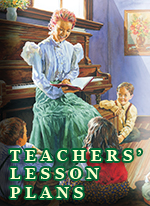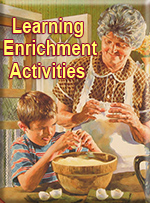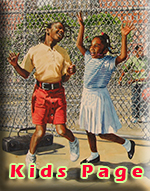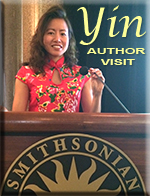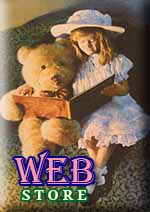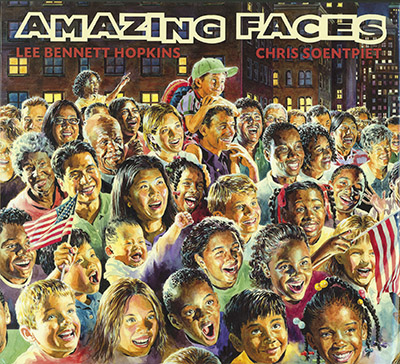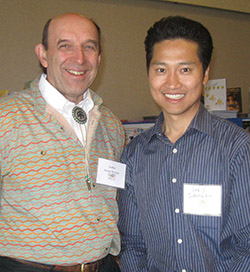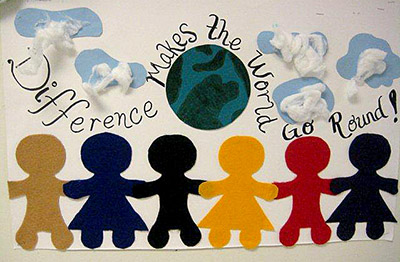
ABOUT THIS BOOK:
Whatever we feel—whether happy or sad, excited or wishful, proud or lonely—our faces mirror our emotions. In this contemporary yet timeless collection, sixteen evocative poems are brought to life in diverse and detailed faces that reveal the universal feelings we all share. Girls and boys, women and men invite us to experience their world, understand their lives, and find the connections that bring us together.
Poet Lee Bennett Hopkins gathers these insightful works from an impressive array of authors, including Joseph Bruchac, Rebecca Kai Dotlich, Nikki Grimes, Pat Mora, Carole Boston Weatherford, Janet S. Wong, Jane Yolen, and more. Glowing illustrations created by Chris Soentpiet infuse the verses with atmosphere and exquisite settings. Readers of all ages will want to feast their eyes on these captivating poems and pictures again and again.

BOOK
REVIEWS:
BOOKLIST: APRIL 2010
"Illustrated with large, handsome watercolor portraits, the 16 poems in this anthology celebrate the rich
diversity of American kids—what makes each one special and the connections between them. Most poems
are original to this collection, except for the final, “My People,” by Langston Hughes, which is paired with
a close-up view of a huge crowd of parents and kids of many backgrounds that also appears on the cover.
A sad kid is not accepted by the in-crowd in Jude Mandell’s “I’m the One.” In contrast, Pat Mora’s poem
features a Latino boy who finds bliss in solitude (“I like to count the stars”). Jane Medina’s “Me x 2”
includes Spanish translation of the lines and shows the riches of bilingualism: “I do twice as much.” And
Jane Yolen’s “Karate Kid” is a fun read-aloud (“Chop / Kick / Peace / Power”) and features a dynamic
portrait of a girl in action. A great collection for sharing at home and in the classroom."
SCHOOL LIBRARY JOURNAL: MAY 2010
“You can read many things in her face,” says Joseph Bruchac in describing Aunt Molly Sky, a venerable Native American storyteller. Aunt Molly is one of 16 people, varied in age and ethnicity, whose everyday lives are reflected in this picture-book anthology. Faces figure prominently in some poems as Hopkins and Soentpiet celebrate America’s diversity. “Amazing Face” belongs to a chortling Asian baby who is addressed by a blond mother, and the concluding poem, Langston Hughes’s “My People,” is paired with a multiracial crowd waving flags in a city fireworks scene. Some of the voices and warm watercolor portraits are necessarily specific–Chinatown’s child who lives “above Good Fortune/where they catch crabs fresh” or “Latina, abuela, she is everyone/of us come from otherwhere.” Some experiences–dreams, loneliness, the heroism of a returning soldier or a smoke-smudged firefighter–are universal. Varied in shape, each poem is set on an ivory half-page next to a broad scene–sometimes a single child, other times a small group or an energetic crowd. This appealing package of poetry and ideas will be enjoyed by children, parents, and teachers. There are many bits to savor, and the underlying theme is so well executed that it could easily stimulate interest in finding more people in poems."
PUBLISHERS WEEKLY: (STARRED REVIEW) MAY 2010
"The focus of this excellent collection of disparate poems is not strictly faces but people. The poems--contributed by writers such as Joseph Bruchac, Nikki Grimes, Pat Mora, and Jane Yolen--include character sketches, vignettes, and descriptions of people from all over multicultural America. Soentpiet’s (Saturdays and Teacakes) astonishing watercolors unify the book’s theme as he concentrates each illustration on the faces of Americans who live in both small towns and cities. His paintings are lifelike, full of shadows and depth, and astonishingly precise. They allow readers to see a variety of emotional scenes, featuring a Native American storyteller, a soldier returning home, an insouciant Mexican-American girl, a firefighter, flirting teenagers, and a busy street in Chinatown. Especially noteworthy is Rebecca Kai Dotlich’s opening poem, “Amazing Face,” a touching portrait of a parent’s hopes for a new baby (“Amazing, your face./ It shows you will watch from a window,/ whisper to a friend,/ ride a carousel...”). The ending reveals a sea of faces and fireworks to accompany Langston Hughes’s “My People,” a fitting celebration of Americans in all their diversity."

Enjoy and Embrace Learning: Poetry Friday
Write Time: Lee Bennett Hopkins
Amazing Faces - Robyn Hood Black - - children's author
Through the Looking Glass Book Review: Poetry Friday
Review from Washington Parent
GregLSBlog: AMAZING FACES
Rutgers University Project on Economics and Children
Kids Lit Blog Archive
Sal's Fiction Addiction

 |
Lee Bennett Hopkins's poetry anthologies include Marvelous Math, which won a Parents' Choice Gold Award and was a Reading Rainbow selection, and Spectacular Science. The recipient of a Christopher Award and the University of Southern Mississippi's Medallion for "lasting contributions to children's literature," He is also the recipient of the 2009 National Council of Teachers of English (NCTE) Award for Excellence in Poetry for Children. Mr. Hopkins lives in Westchester County, New York, and Cape Coral, Florida.
Listen as Lee Bennett Hopkins talk about AMAZING FACES
|

Poetry and Diversity with
Lee Bennett Hopkins and Chris Soentpiet
(Anthologist and illustrator of AMAZING FACES)
|
 |
|
 |
AMAZING FACES is a new poetry anthology celebrating the faces all around us—girls and boys, women and men revealing the universal feelings we all share. Here, Lee Bennett Hopkins, the poet who gathered these poems, and Chris Soentpiet, the painter who illustrated them, share their thoughts on poetry, diversity, and the challenges and rewards of creating AMAZING FACES
Lee, can you tell us a little about your inspiration for AMAZING FACES , and how you selected poems for this anthology?
Lee Bennett Hopkins: I want to show children of all ages, all races, that all faces show similar emotions—happiness, joy, sadness, surprise, empathy.
To do such a collection I looked at hundreds of published poems. In AMAZING FACES I only reprinted two selections. Nine works were written especially for this collection; five were written for me, published in articles or books I have edited. I feel it is important to bring to readers—children and adults—new works rather than poems that have been over-anthologized—to bring freshness to a book. The one exception, "My People" by Langston Hughes, was added because Hughes' work is timeless, universal.
When you create an anthology, do you start with a theme and then pick poems, or do you begin with a poem and then build a theme around it?
Lee Bennett Hopkins:
I always begin with a theme. The challenge is to find and/or commission poets to fulfill it.
This book feels like a tribute to Americans—did you intend for AMAZING FACES to be a patriotic book?
Lee Bennett Hopkins:
More than a patriotic book, I wanted to show life as it is today . . . living in a pluralistic society, sharing similar everyday lifestyles yet holding on to traditions.
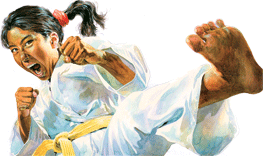 |
Chris, is it different to illustrate an anthology as opposed to a book by a single author?
Chris Soentpiet: Yes, most books that I have worked on are picture books written by one author and it usually follows one or two main characters throughout the entire story. In an anthology a single page must contain its own story with a beginning, a middle, and an end. Therefore I only have one painting to tell that entire story. Whereas in a picture book I have 16 paintings to tell a story.
|
What were some of the challenges in creating AMAZING FACES ?
Lee Bennett Hopkins: My only challenge is to create a book that offers the best poetry. How lucky I am to have many of America's top poets willing to write for me. To be able to write or pick up the phone to ask master-writers such as Joseph Bruchac, J. Patrick Lewis, Pat Mora to contribute to a project is mind-boggling. Rebecca Kai Dotlich set the tone to the volume with her wondrous opening poem, "Amazing Face." Once that was set in place I was off and running.
Chris Soentpiet: First and foremost, I do a lot of researching. Since there are lots of different nationalities in this book, I had to make sure the trinkets and jewelry match what the characters would wear. I had to make sure the Native-American grandmother wears costume jewelry that reflects her heritage but at the same time was trying not to "stereotype" the look. Subsequently, I attended two powwows to learn about the Native Americans.
I also had to research language and writing styles of different ethnic groups. In the Chinatown scene, I had to make sure the Chinese characters were drawn accurately thereby to reflect the store's business. In the "ME x 2/YO x 2" scene, the menu that appears on the window needed to be correctly written in Spanish. Small details are very crucial to guarantee authenticity in my illustrations.
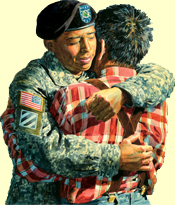 |
In addition, there are uniform codes that I had to be aware of before painting. For example, in the scene where the young man returns from the war, I had to make sure the insignia which is pinned to his flash and appears on his beret identifies his correct army unit. On the right arm you will find an American flag patch in reverse, with the correct unit patch where the solider was deployed. On the left arm (without the flag) is the unit where the soldier is currently assigned. With so many different patches to identify the unit, I focused on the 3rd infantry because they were deployed to Iraq three separate times. I chose the Iraq war because it will give the illustrations an up-to-date feel. |
Not all army patches and crest insignia are the same for every soldier. Upon returning home, when a soldier is among civilians, they must wear their beret. However, when a solider is on base they must switch over to a patrol cap. I have interviewed 5 different Army sergeants at army recruiting offices in New York City and Omaha. Again, these small details are very crucial to guarantee authenticity in my illustrations.
Chris, how do you create such lifelike illustrations? How long does it take?
Chris Soentpiet:
- Research: by studying people, wherever I go. Checking out books at the library.
- Thumbnail sketches, about 3”x5” in. I review these sketches with the publisher. At this point we want to get a general idea and the feel of the book.
- Gathering props and costumes.
- Hiring and taking pictures of models in my studio. I have to thank all my models especially in this book. This book by far contained the most models I’ve ever used in one single book—more than sixty models.
- Sketching the large final pencil sketches, approximately 20% bigger than the original book size. This part of the process takes about 3-4 months. Once finished, I review [the sketches] with the publisher for approval.
- Once the final pencil sketches are approved, I re-sketch the entire drawing onto the watercolor paper using a hard 8H pencil.
- Next I paint with watercolors. Always having the photo references next to me allows me to paint realistically. Each painting, depending on the detail, takes about 2-4 weeks to paint. I paint for about 7-9 hours a day, in complete silence. This painting process takes about 7-10 months for the entire book.
What was your favorite part of working on this book?
Lee Bennett Hopkins: My favorite part of working on AMAZING FACES was the back and forth editorial process, working with master writers to bring about the best work we can. We sometimes argue over words, phrases, we often laugh over a concept. In the end, we have only one goal: to bring the best possible work to our readers. The love we share for one another shows in the incredible work they pen.
Chris Soentpiet: I learned about different ethnicities and their heritage, and how to paint all different races. In my past picture books, I usually painted one ethnicity for each book. In AMAZING FACES , I had the opportunity to paint many different ethnicities in one book, which was absolutely fun.
Why do you think it’s important for children to read poetry?
Lee Bennett Hopkins: For decades I’ve been asked this question. I’ve been asked it so many times I decided some time ago the best answer would be to respond in verse. So:
WHY POETRY?
Why poetry?
Why?
Why sunsets?
Why trees?
Why birds?
Why seas?
Why you?
Why me?
Why friends?
Why families?
Why laugh?
Why cry?
Why hello?
Why good-bye?
Why poetry?
That’s why!
(Reprinted with permission of Curtis Brown Ltd.)
Chris Soentpiet: Poetry can be a fun way to get kids excited about reading. Children love rhymes and the magical effects of verse. Whenever my son is bored, we recite some playful classic poetry like "Little Bo Peep", "This Old Man", "Rub-a-Dub-Dub", "Twinkle, Twinkle, Little Star," and "Mary Had a Little Lamb."
What do you want young readers to take away from AMAZING FACES ?
Lee Bennett Hopkins: Again, empathy, compassion, a feeling that we are all different yet deep inside we are the same. We all have feelings, we laugh, we cry, we love, we feel, we are an amazing group of people. We have amazing faces . . . yes, we are amazing. Amazing!
Chris Soentpiet: I hope they come away with more appreciation for those who may be physically different from them and learn that all of us are unique and different, which makes each one of us special.

| AMAZING FACES , is a collection of poems celebrating the amazing people and faces that surround us every day. We asked the poets to share the stories behind their poems. Here are some of their responses: |
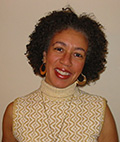 |
WHICH WAY TO DREAMLAND? by Carole Boston Weatherford
The poem, “Which Way to Dreamland?” was inspired by a question that my very creative and curious son asked my mother: “Nana, how do dreams get in your head? |
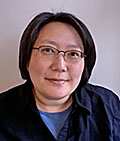 |
LIVING ABOVE GOOD FORTUNE by Janet Wong
When I was four years old, I worked after school in my mother’s beauty shop in Los Angeles, sweeping up hair. At dinnertime, I walked down the block and worked at my grandparents’ Chinese restaurant as a waitress (mainly just collecting tips). It was a fun and busy day, but I wanted desperately to work at a hamburger place instead—French fries for free! My parents told me how lucky I was to work at our restaurant. Luck is important in Chinese culture. If you stroll down the street in Chinatown, every other sign or storefront seems to involve Fortune or Luck and their symbols—the colors red and gold, the numbers 8 and 9, firecrackers, oranges, fish, and crabs. Many times as a child I was told to appreciate my good luck, and many times I remember wondering, “Lucky me?!”
|
| |
|
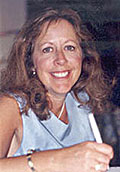 |
AMAZING FACE by Rebecca Kai Dotlich
I am, and will always be, fascinated by children. Especially very young children. I look at them and a million dreams and possibilities run through my mind: the person they will become, the journeys they’ll take, the hobbies they’ll choose, the crafts they’ll learn, the billowed joys they will experience, the heartache and heartbreak they will ultimately and unfortunately experience too. I want each child on this Earth to know they are loved by someone, that they are valued, and that they are truly and downright amazing. I hope my poem sends this message, whoever is listening.
|
| |
|
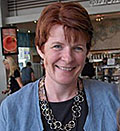 |
FIREFIGHTER FACE by Mary Cronin
I enjoy shining a light on the work of firefighters in my writing; my father was a New York City firefighter for more than thirty years. While he never talked about “the job” at home, we knew he loved his work and took great pride in it. “Firefighter Face” was inspired by a picture in a photography book about New York firefighting. In the photo, a firefighter pauses, grimy and exhausted. Yet there’s no mistaking the expression on his face, the look of satisfaction in a job well done. I wanted to capture that amazing expression in poetic form, and I dedicate the poem to firefighters and their loved ones.
|
| |
|
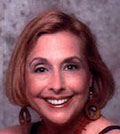 |
I’M THE ONE by Jude Mandell
It’s a sad reality that being excluded or ostracized by peers is a daily experience for so many youngsters. When Lee contacted me to write a poem on this subject for AMAZING FACES, I not only found inspiration in my many years as a psycho-educational diagnostician, teaching regular and special-needs students who were often shunned or bullied, I tapped into my own feelings of confusion and hurt when friends or classmates picked other kids to share their fun instead of me.
Parents and teachers try to provide excluded kids survival—skills to help them cope with the upset of feeling left out. Self-talk mantras, like: Pretend not to care when friends don’t ask you to join their games at recess—find someone else to play with, or, Hide your feelings—don’t let them see you cry, or, Don’t react if classmates groan when you’re assigned to their team, you’ll only make things worse, or, Ignore those whispers, snickers, and ugly insults that make you believe you’ll never, ever, fit-in. Why would you want to be friends with kids that are so mean anyway? With enough practice and support, sometimes these strategies even work. Unfortunately for most kids, the social and emotional costs to kids trying to survive in the face of non-acceptance can be too high.
If children’s longing to belong is strong enough, and their feelings of self-worth weak enough, they may end up re-defining themselves by the opinions of others, devaluing all the unique and creative insights and abilities that make them interesting and unique, abdicating their sense of personal power to the very kids that make them feel deficient.
On the flip side, if kids are ‘lucky-enough’ to become members of a popular clique, but fear being kicked-out if they don’t toe the line, they may tie themselves so tightly to the group-mentality that they’re willing to abandon the values of fairness and compassion they grew up with, and secretly believe in.
The seeds for victim mentality and bullying lie in both scenarios. Just look at the headlines.
In writing “I’m the One”, I wanted the little boy in the poem to be vulnerable—too young to hide his bitter disappointment at being left out, yet strong enough to hold to an inner certainty that he’s still someone worth knowing. My hope for all youngsters facing the challenges of today’s social climate is that they find the strength to hold firm to that same certainty for themselves.
|
| |
|
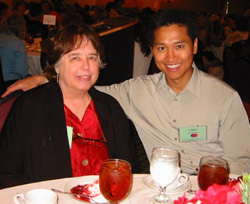 |
KARATE KID by Jane Yolen
A number of years ago, Lee Bennett Hopkins asked me to write a poem for a sports anthology. “How about karate?” I said. There is a dojo near my house. I had some friends who had kids in karate and a granddaughter who was just starting into the martial arts. Also, I find some of the Chinese martial arts movies fascinating in a balletic sort of way.
And so I wrote “Karate Kid.” It has taken on a life of its own. Sometimes (if a writer is very lucky) that happens.
|
| |
|
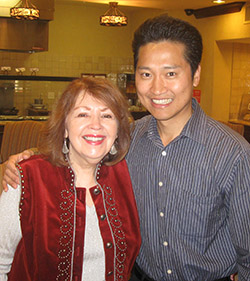 |
HIGH IN THE SKY by Pat Mora
I was grateful, in January 2008, when Lee Bennett Hopkins invited me to write a joyful poem about a Latino child for the book now titled Amazing Faces. I did what I always do when I’m working on a writing project—I mulled. I’ve spent much of my life in the Chihuahua Desert, first in El Paso and now in Santa Fe. I thoroughly enjoy summer evenings in the desert, probably because I so shiver in cold weather. I also love the immensity of the sky at night and the comfort of the stars. I enjoyed writing about a child savoring a desert evening and hope the reader enjoys the experience too.
|
| |
|
|
AUNT MOLLY SKY by Joseph Bruchac
|

|
Theme: Culture and Tradition, Generosity, Compassion, Helping Others, Trading/Bargaining, Friendships, Latino/Hispanic American, American Indians, Chinese/Asian Americans
Synopsis: Whatever we feel—whether happy or sad, excited or wishful, proud or lonely—our faces mirror our emotions. In this contemporary yet timeless collection, sixteen evocative poems are brought to life in diverse and detailed faces that reveal the universal feelings we all share. Girls and boys, women and men invite us to experience their world, understand their lives, and find the connections that bring us together.
Teacher Tip: You might use the poems, HIGH IN THE SKY, ME X 2 book during Hispanic Heritage Month which is celebrated from September 15 to October 15. In May celebrate Asian Pacific American Heritage Month by reading the poems, MY CHINATOWN, LIVING ABOVE GOOD FORTUNE. The themes of generosity and caring also make the book an appropriate beginning-of-school selection.
Poetry Activity:
ACTIVITY # 1: Read a poem aloud to your students several times. Have them draw a picture to go along with the poem. Also, talk about how the title can help to figure out the main idea of the poem. Compile the activities into a booklet. Use the poems as read alouds, creative writing/drawing, rhyming words, handwriting, etc…
ACITIVITY # 2: Introduce your students to poetry by reviewing nursery rhymes of Dr. Seuss (because most students are familiar with them). Finish off the poetry activity with Langston Hughes. By reading MY PEOPLE.
ACTIVITY #3: Break students into small groups. Let them choose a topic and have each write a prepositional phrase then pass the paper along to the next student. After you edit these, give them chart paper and markers. Have them copy the poem onto the chart paper and illustrate it. For example:
TOPIC: THE PARK
STUDENT #1 WROTE: at the park
STUDENT #2 WROTE: among many people
STUDENT #3 WROTE: reading books
STUDENT #4 WROTE: flying kites
STUDENT #5 WROTE: in the beautiful sunshine
STUDENT #6 WROTE: is my favorite place to relax!
Exploring the Book
Point to the names of the author and illustrator. Ask students if they have ever read any books written by Lee Bennett Hopkins or Chris Soentpiet. What books were they?
Vocabulary
Write the following words from the story on the chalkboard. After discussing each word and its meaning, have students take turns using the words in sentences. Then suggest that students use at least five of the words in a short story.
amazing |
abuela |
mischief |
lullaby |
|
triumphant |
stratosphere |
beautiful |
fabric |
|
strength |
courage |
thoughts |
pride |
|

|

|

|
|
|
AFTER READING
Discussion Questions
After students have read the book, generate discussion, review comprehension to deepen students’ understanding. Display the book and read aloud the title. Ask students what they the front cover illustration is. What are their emotions? Write a list of basic emotions, happy, trust, fear, surprise, sadness, disgust, anger, anticipation, surprise. Discuss these emotions as you review each page.
ELL/ESL Teaching Strategies
The following activities may be used with students who speak English as a second language.
- Make key words as concrete as possible by pointing to objects in the illustrations or the classroom.
- Use a hand mirror so students can see their mouths as they attempt new words. Offer frequent praise and support.
- Build esteem by asking Spanish speakers to begin a glossary based on the Spanish words in the book. Suggest that students add other words related to the story as well. Encourage students to teach words from the glossary to the rest of the class.
Interdisciplinary Activities
To help students integrate their reading experiences with other curriculum areas, introduce some of the following activities.
Social Studies
The following activities may be used with students who speak English as a second language.
- In ME x 2, ask students if they tried Mexican foods before. What would they order? Talk about how Mexican foods differ from the foods they typically eat. Visit a nearby Mexican restaurant. Try to arrange for students to see a Mexican dance ensemble.
- In MY CHINATOWN and LIVING ABOVE GOOD FORTUNE. If students cannot visit a nearby Chinatown, try to recreate Chinatown’s storefronts in the classroom. What do they see? Fish, crabs on the streets?
- In AUNT MOLLY SKY, ask if there are any American Indians (aka: Native Americans) in the class. Did they experience racism? Talk about traditional American Indian dance. What is a powwow? If possible, arrange for a parent, physical education teacher, or dance teacher to lead the class in learning a typical American Indian dance.
|
|
|
|

